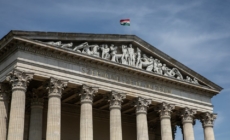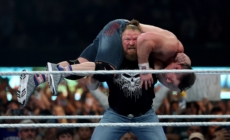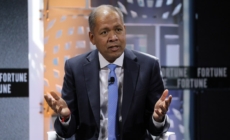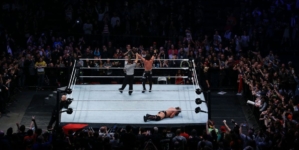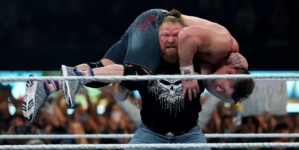-
Budapest to Host Landmark Textile Art Exhibition - 16 mins ago
-
Green-Card Holder Denied Reentry to US Over Past Arrest - 20 mins ago
-
Olivia Moultrie Scores 2 Goals in 3-1 USWNT Victory Over Portugal - 21 mins ago
-
New report details threats facing uncontacted peoples - 23 mins ago
-
Danube Fish Monitoring Reveals Healthy, Diverse Populations and Rare Species - 50 mins ago
-
WWE Veteran Moves Into New Exciting Role: Report - 59 mins ago
-
Trump calls Putin test ‘inappropriate’ - about 1 hour ago
-
Prime Minister Viktor Orbán Meets Pope Leo XIV - about 1 hour ago
-
Former WWE Star Throws Shade at Brock Lesnar During MLW Show - 2 hours ago
-
Prime Minister Viktor Orbán Meets Pope Leo XIV - 2 hours ago
Barclays CEO issues warning about US credit risks
The CEO of multinational bank and financial services firm Barclays has struck a cautious note on the potential risks present in the U.S. credit market, despite relative strength in the wider economy.
In a recent interview with Bloomberg on the sidelines of the Future Investment Initiative summit in Saudi Arabia, C.S. Venkatakrishnan said that the U.S. economy “continues to perform reasonably well,” with robustness in credit conditions and employment.
However, the CEO said that Barclays was “absolutely becoming more vigilant” about potential credit deterioration and the nature of its lending activities.
Why It Matters
Venkatakrishnan’s comments come amid a period of scrutiny around global lending standards, sparked by the collapse of car parts maker First Brands and subprime auto lender Tricolor. The two U.S. bankruptcies have rattled Wall Street and raised questions about oversight of the private credit market—involving private lenders rather than banks or public markets—while serving as a wake-up call for those who were exposed to the firms.
Jamie Dimon, CEO of JPMorgan Chase, has warned that this could indicate further systemic weaknesses in the global financial system, a stance recently echoed by Bank of England Governor Andrew Bailey, who noted parallels to the conditions preceding the 2008 Global Financial Crisis.
What To Know
In his interview with Bloomberg, Venkatakrishnan stressed that Barclay’s remained cautiously optimistic about the state and trajectory of the U.S. economy. However, he added that the ongoing government shutdown, which has delayed key pieces of economic data, had made it “difficult to handicap exactly what’s going on with employment, which is the most important part of this.”
Regarding contemporary risks in credit, he noted that the global economy is at the “at the end of a 15-year-long credit cycle,” referring to the historic expand-and-contract pattern in borrowing.
“And so, you’ve got to be cautious as credit cycles go longer, and longer, and longer.”
Barclays had no exposure to First Brands, but suffered a £110 million ($147 million) hit from the collapse of Tricolor, per Bloomberg, which has led to a full reexamination of its loan portfolio.
“Now fraud can be isolated bad actors, or it could be economic conditions that increase the propensity towards bad acting,” Venkatakrishnan said in a call with analysts last week.
JPMorgan was similarly forced to write off $170 million in bad debt to Tricolor, and its CEO said the two auto bankruptcies had highlighted concerns about other risky players reliant on opaque forms of financing.
“My antenna goes up when things like that happen,” Dimon said during an earnings call in mid-October. “And I probably shouldn’t say this, but when you see one cockroach, there are probably more.”
What People Are Saying
Barclays CEO C.S. Venkatakrishnan told Bloomberg: “We do think that the [U.S] economy continues to perform reasonably well, that credit conditions continue to be strong, employment—we think—continues to hold.”
“But there is the effect of tariffs, which is a little bit uncertain,” he added. “So, we have to see but I think the expectation is that the [Federal Reserve] cuts a bit.”
Bank of England Governor Andrew Bailey, quoted by the BBC, said of the two bankruptcies: “I think the big question…is: are these cases idiosyncratic, or are they what I call the canary in the coal mine? Are they telling us something more fundamental about the private finance and private assets sector? I think that’s still a very open question in the U.S. I think it’s a question we have to take very seriously.”
What Happens Next
Several firms beyond Barclays and JPMorgan have taken a hit from Tricolor’s downfall, while others such as UBS had significant exposure to First Brands.
Reuters, citing a source familiar with the matter, reports that the Department of Justice has launched a probe into the First Brands bankruptcy.
Source link
